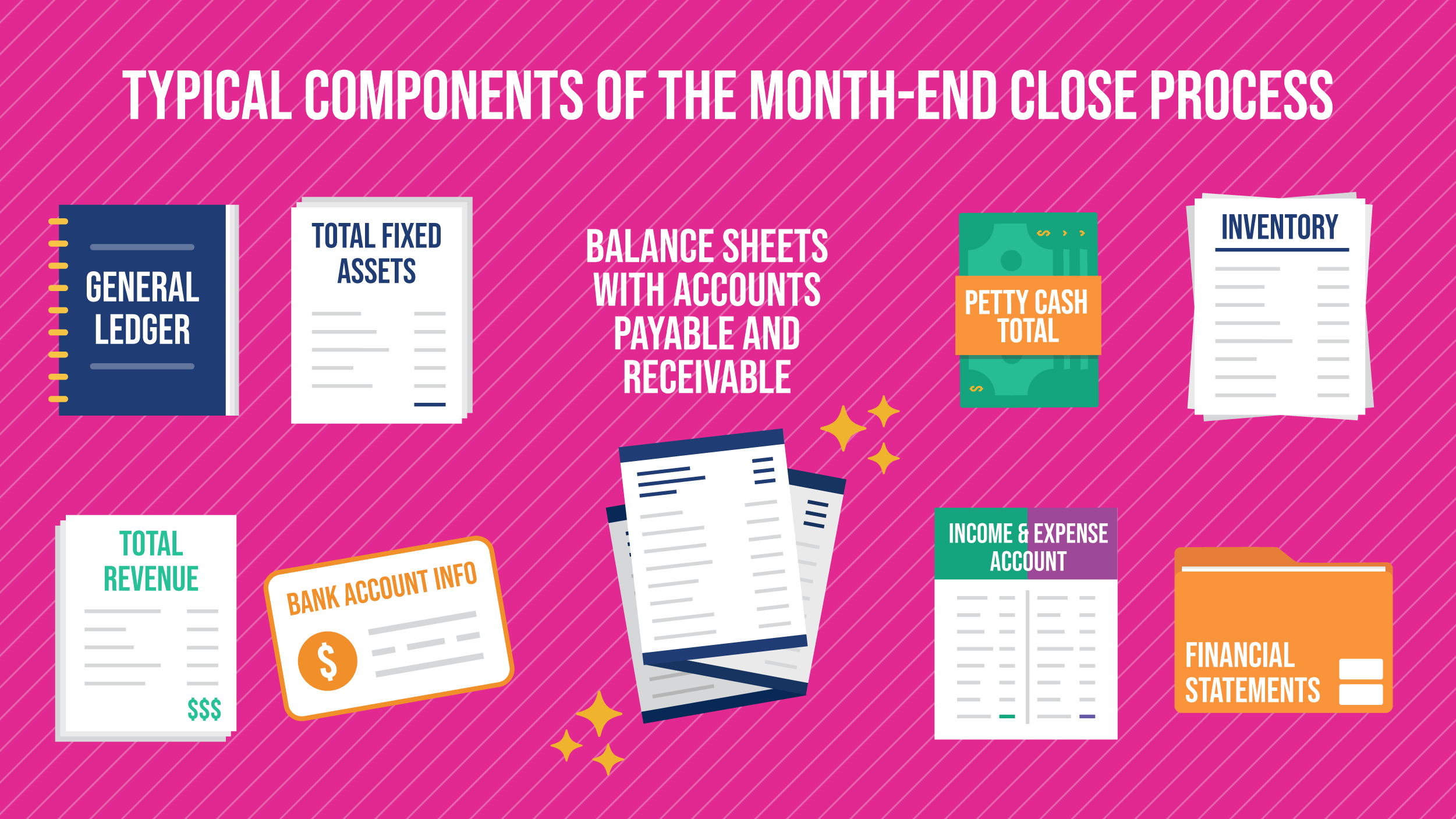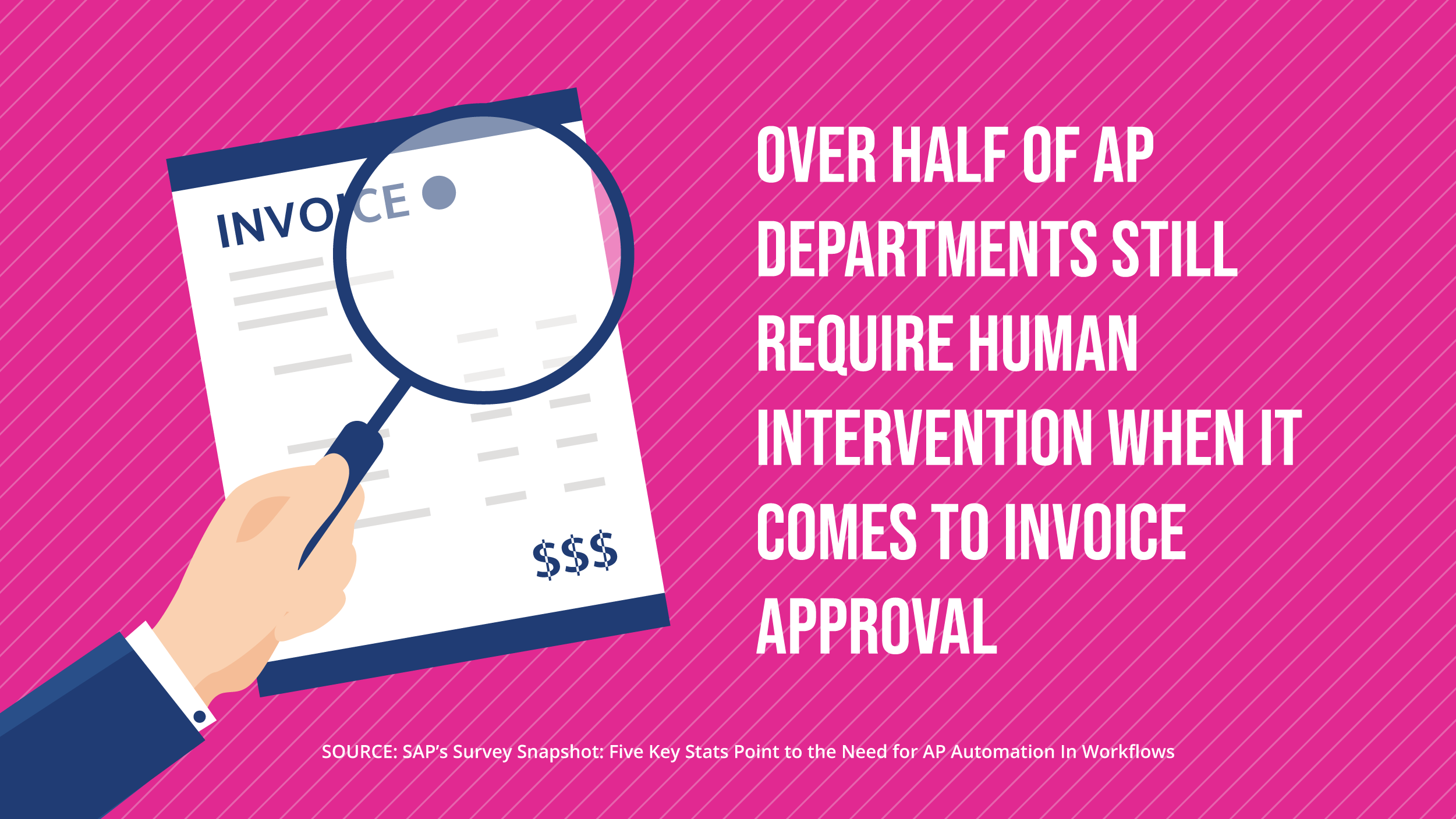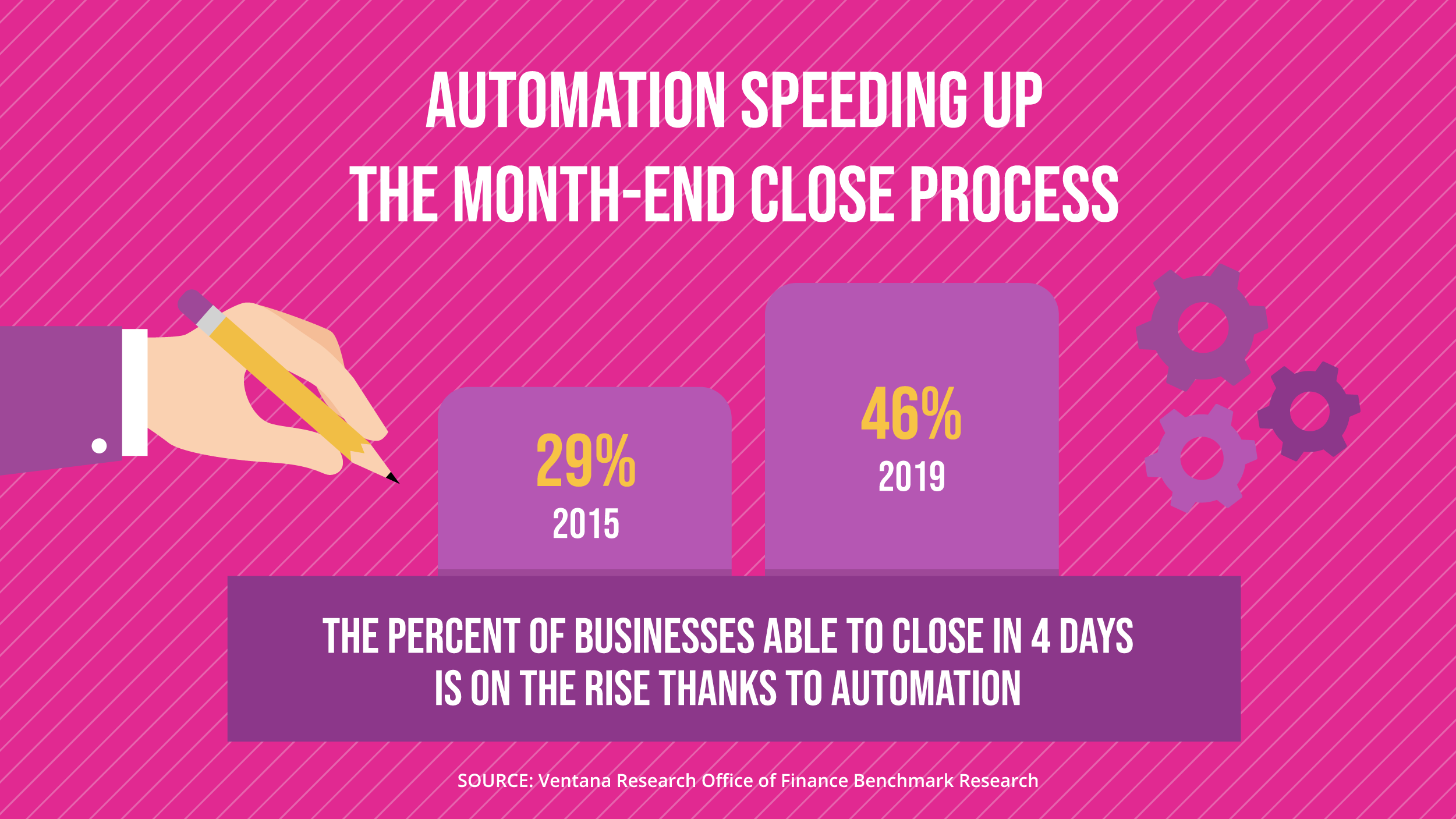The Modern Accounts Payable Month-End Close Process

A “fast, clean close” has been the mantra of many a finance and accounting department since as far back as the 1990s.
What does that mean?
Well, since then an effective account team has generally been expected to close their books, with accuracy, in the span of one business week at the end of each month. Fast and clean.
Whether you’re starting from scratch when it comes to creating an effective month-end close process or you’re looking for ways to modernize the one you already have by making upgrades to your accounts payable (AP) workflow — here’s everything you need to know.
Exploring Accounts Payable and the Month-End Close Process
Before we can help you create a more modern system when it comes to your month-end close process, it’s important that we’re all on the same page about the practice.
What is a Month-End Close Process?
To put it simply, the month-end close is an important point in the monthly accounting cycle where all transactions are accounted for, business balances are adjusted and finalized (or the books “closed”), and then reports are created that reflect how the business performed during that month.
The date when the month-end close process begins and the books are closed — again this should happen about a week before the end of each month — is the cutoff point for all business transactions for the month. Every transaction needs to be accounted for either before or after that date. This is done so that your balance sheet can be “zeroed out” and your organization can start fresh the next month. Keep in mind that closing the books for a given month typically finishes within the first week of the next month.
What Does the Month-End Close Process Look Like?
Each business’ month-end close process will look different depending on their existing systems, industry, etc.
But generally speaking, during a month-end close, here are some steps many accounting departments will need to complete to make sure their books are accurate and finalized:
- Total up income by reviewing revenue, accounts receivable, etc. Any B2B payments that haven’t come through yet need to be followed up on as soon as possible
- Total up expenses, such as accounts payable, and make sure you’re making or accounting for all payments in your month-end report. Again, any missed expenses should be paid out ASAP
- Reconcile accounts by comparing your records to bank statements to catch any errors
- If you use petty cash, account for petty cash purchases
- Record any changes in or payments made toward fixed assets (land, buildings, equipment, etc.)
- If you have inventory, update your inventory count
- Review financial statements (general ledger, balance sheet, profit and loss statement, etc.) to also catch any last math errors, missing money, etc.
- Do a final check of revenue and expense accounts to confirm all the numbers you’ve come up with so far
- After a final review — by another set of eyes if possible — you’re ready to close the books and prepare to start fresh next month
Where Accounts Payable Fits Into the Month-End Close Process
Now we get to dive a little deeper into a very important element of the month-end close process: Accounts payable.

Accounts payable of course have a big impact on the final expenses which you have to address when it comes time to close the books. But they also go beyond that.
If accounts payable aren’t handled in a timely and accurate way, liabilities can be easily underrepresented at month’s end and you could risk overstating your net income as well as throwing off business metrics for months to come.
In addition, your accounts payable records can impact everything from your business’s cash flow to its ability to attract outside investors, its credit rating, and even its borrowing costs.
Because AP is such an important segment when it comes to the overall process of closing the books at the end of each month and because improving upon AP workflows is vital to the health of your entire organization, from here on out we’re going to focus on the month-end close process as it pertains to accounts payable.
The Ins and Outs of the Accounts Payable Month-End Close Process
While the accounts payable month-end close process will certainly vary depending on your own business and accounting practices, here again are some best practices to follow when it comes to closing out AP every month:
- Delve into the accounts payable ledger to confirm each element of your total liability amount: Money owed to lenders, money owed to service providers, money owed to employees, and money owed for inventory
- If you deal in inventory, double-check that your inventory account aligns with the amount shown on each bill
- Pay bills via a payment priority plan that combines data about operations, liquidity, and the age of an invoice to make sure everything is getting paid at the right time
- Chase down approvers for any exceptions or purchases made outside of normal payment channels
- Consider putting together a monthly post-payment remittance report that reviews your AP practices to ensure you’re managing assets and payments in a way that’s still favorable to the company
Why It’s Important to Have a Modern Accounts Payable Month-End Close Process
Here’s why it’s so important to put each of them into effect to create a modern workflow.
Help Your Organization Plan for the Future More Successfully
As mentioned earlier, accounts payable can have a big impact on the health of a business.
Business owners and/or executives often rely on the numbers AP comes up with each month to help inform strategic decisions for both the near and far future.
The sooner AP is closed out at the end of each month or at the start of the next month, the sooner these informed decisions can be made regarding what has worked, what hasn’t, and what action can be taken to move the organization forward.
And it should go without saying that it’s not just about the speed, it’s also about the “cleanliness” of the close. A modern AP close should also prioritize accuracy, or all the plans that depend upon it could all be for naught.
It can also help to safeguard against (more) unforeseeable business interruptions. In 2020, 63% of the finance, technology, and operational workers surveyed by SAP reported that their AP processes required a person to go into a physical office to process checks.
How do you think that went over during COVID-19?
Today, business isn’t just going fast — it’s also going digital. To prepare your organization for the modern landscape and keep it running no matter what major upsets or changes to the “status quo” await, it’s hugely beneficial to develop a modern accounts payable month-end close process that doesn’t rely so much on manual or in-person human intervention.
Introducing Digital into Your AP Process Enables Accounting to Focus on Deep Work, Efficiency, and Scale
Not only did SAP find that the majority of organizations were wasting personnel time to cut checks, but they also found that 58% are using processes that require manual interaction when it comes to approving invoices.
Because of this, only about half of respondents said they could increase their AP output without hiring another team member.
If your business can’t handle monthly fluctuations in AP output without adding a whole new full-time employee to the team, you’ve got a manual labor problem.

A modern accounts payable month-end close process enables AP pros to better focus on important work while automating manual, repetitive tasks like processing checks, sending invoice approval reminders, and so on. And by doing so, it also allows your team a little slack that they can pick up as needed when AP output inevitably fluctuates over the course of a year — no need to find a new hire until your growth absolutely supports it.
Here are a few tactics that’ll help you create the kind of modern AP closing practices that empower your accounting team and give your whole business the tools it needs to make great growth decisions.
4 Tactics for Creating a Cutting-Edge Accounts Payable Month-End Close Process
There are a lot of moving parts when it comes to the accounts payable month-end close process. The following tactics should help you create smoother connections between those parts and develop a more efficient and effective system for handling your end-of-month responsibilities.
Consider a Centralized Solution Where AP Employees Can Easily Access and Process Invoices
Managing invoices often takes a lot of time and effort for a few reasons, but one of the biggest is that businesses typically lack a singular place and process for finding and paying them.
When you have a singular location where vendors can submit invoices and any AP employee with the right permissions can access and process them, you’ll remove some of the most common AP bottlenecks and shorten the invoice approval and payment workflow.
Improve Communication Channels to Answer AP Questions in a Timely Manner
Another reason for drawn out invoice processes?
The lack of a clear communication channel where external vendors, approvers, and AP team members can address the questions that keep certain invoices in limbo.
Invoices often go through a long journey before they’re paid. This journey can be better managed and even cut short when all the stakeholders involved are able to quickly communicate about the terms of service, due dates, reviews and approvals, and so on.
Take Some of the Stress and Time Out of Vendor Management with Better Invoice Intake
Another report by Stampli and Treasury Webinars, “The How, the Why and the ROI of AP Automation,” found that over 20% of businesses choose to invest in AP technology because their AP employees spend too much time “managing” vendor relationships. Aside from fielding phone calls, AP departments also commonly deal with duplicate invoices and invoices that are sent to the wrong person or department and have to be tracked down manually.
What modern AP departments need is an invoice management intake process that handles some of these vendor management tasks like weeding out incorrect or duplicate invoices and rerouting invoices to make sure they get to the right people. The result will be happier and less needy vendors that get paid faster and less hurried AP professionals when it comes time for the month-end close.
Interested in Improving Your Month-End Close? Check Out Stampli’s AP Automation
Stampli is an AP automation technology partner that’s 100% committed to taking the weight of redundant, manual tasks off your shoulders and making you an AP star.
To learn how you can incorporate a smoother, more efficient AP process into your business, (including all the benefits that it comes with), learn more at www.stampli.com.
Build a Better Accounts Payable Month-End Close Process with Stampli

There is really no doubt that automation has been a helpful development when it comes to accounts payable — and especially the accounts payable month-end close process.
Stampli is a dedicated accounts payable automation platform that’s devoted to helping AP departments modernize their workflows with all kinds of features — from ultimate payment flexibility to vendor management capabilities to a complete procure-to-pay invoice management system that facilitates the entire invoice reception, communication, approval, and payment process — from check and ACH payments, to paying outside of Stampli.
Aside from our easy-to-use interface that makes the month-end close a breeze, what really makes Stampli special is our investment in artificial intelligence (AI), machine learning (ML), and optical character recognition (OCR) — which our customers can interact with when they engage our smart AP bot, Billy!
Billy is a digital assistant that interprets invoices and bills in real-time to automatically kick off invoice coding and approval workflows — or, flag incorrect or fraudulent invoices to make sure the right person sees them before they get too far. And, Billy only gets smarter and better at these processes as Billy “learns” from each invoice action.
And because we built Stampli to interact with tons of different financial platforms like Oracle NetSuite, Sage Intacct, QuickBooks Desktop, QuickBooks Online, Microsoft Dynamics 365 Finance, Microsoft Dynamics GP, SAP, Dealertrack DMS, and more integrations — there’s practically nothing stopping you from giving us a try.
In fact, you can get started right now with a no-cost, no-obligation demo from our sales team.
Just fill out our simple contact form and see for yourself how Stampli is the key foundational element of a modern accounts payable month-end close process that empowers your AP team and your business as a whole to reach new heights.